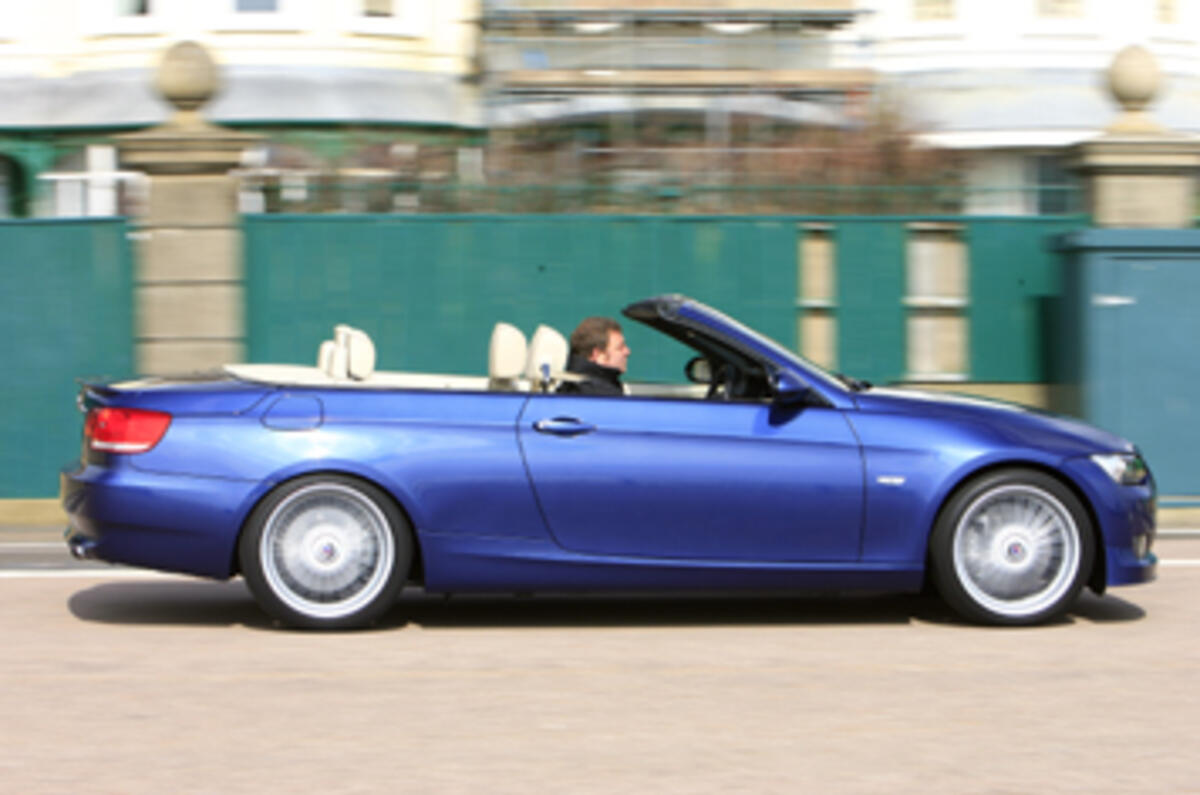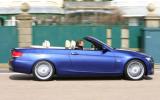What is it?
It’s the Alpina B3 cabrio, which is basically Alpina’s version of the M3 cabrio.
This is the first 3-Series convertible to feature a folding metal roof rather than a canvas hood, remember, so all the extra benefits of strengthening and security enjoyed by the regular 335i cabrio (on which the B3 is unashamedly based) are passed on unhindered.
Essentially what we’re talking about here is a logical extension of the 335i cabrio’s personality, with a hefty side order of Alpina luxury and performance thrown in for good measure.
So while the engine remains the same size as the 335i’s and still uses the same twin-turbo forced induction system, by playing with the ECU and exhaust systems and fitting new pistons that allow the engine to rev higher, Alpina has teased an extra 55bhp from the 2979cc straight six. The standard car has 305bhp but it’s the improvement to torque that makes the biggest impression. The B3 has a whopping 368lb ft, delivered constantly between 3800-5000rpm.
As a result it surges forward on a seemingly effortless and never ending wave of the stuff, which means you don’t have to try hard to go very quickly indeed. Quite the opposite to the way you drive an M3, for instance.
What’s it like?
Pretty damn good, to be honest, and the aspect that best defines the way the B3 drives is the near-perfect amalgam of powerful, torquey performance with such smooth, decisive gearchanges from the quite brilliant six-speed automatic gearbox. And that’s something you won’t get from a BMW M3 cabrio, not until BMW introduces its own version of the twin-clutch gearbox, at least.
Alpina clams the B3 cabrio will get from zero to 62mph in 5.0sec dead and that it won’t run out of puff until 175mph, the factory car’s speed limiter having been removed. From the way the car rockets forwards and then just continues to pile on the acceleration well beyond three figures, it feels – and sounds – at least as quick as Alpina claims, if not more.
Other good points about the B3 are its ride, which hardly appears to have suffered at all in the transition from coupe to cabrio, and the handling. Even the steering remains crisp, even if there is a touch more understeer at high speed than you expect.
The only real downside – apart from the heinous amount of weight there is to carry around (1855kg) – is the boot, which shrinks in real terms by at least half compared with the fixed head. But then that’ll be a problem on the M3 cabrio as well when it arrives.
Should I buy one?
No question, the B3 cabrio is an exceptionally desirable car, one that combines monster pace with reasonable economy and emissions, genuine seating for four, and a proper folding metal hood that will allow you to enjoy those fleeting moments when the sun comes out in this country. And as ever it will almost certainly offer a more relaxing driving experience than the factory M3 cabrio, without feeling overly compromised by the removal of its roof. We like it, we like it a lot.















Add your comment